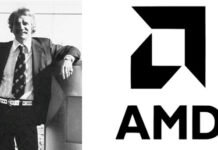Elon Musk, a name synonymous with innovation and disruption, has captivated the world with his audacious vision and relentless pursuit of technological advancements. Born on June 28, 1971, in Pretoria, South Africa, Musk’s journey to success is a testament to his determination, intellect, and unwavering belief in the power of technology to shape the future. This article delves deep into Musk’s life, from his early days to his current ventures, and explores the remarkable achievements that have solidified his status as one of the most influential figures of our time.
Early Life and Education
Musk’s fascination with technology began at an early age. As a child, he voraciously devoured books and displayed an exceptional aptitude for mathematics and science. His parents recognized his prodigious talents and enrolled him in Waterkloof House Preparatory School, where his academic prowess flourished. At the age of 17, Musk left South Africa to pursue higher education in the United States, a pivotal moment that would set the stage for his extraordinary career.
Founding Zip2 and X.com (now PayPal)
After completing his studies at the University of Pennsylvania, Musk embarked on a path that would lead him to Silicon Valley, the epicenter of technological innovation. In 1995, he co-founded Zip2, a company that provided business directories and maps for newspapers. Despite facing numerous challenges and setbacks, Zip2 eventually found success, attracting the attention of major players in the industry. This caught the eye of Compaq, which acquired Zip2 for a staggering $307 million, catapulting Musk into the realm of Silicon Valley’s elite.
Not content with resting on his laurels, Musk set his sights on revolutionizing the financial industry. In 1999, he founded X.com, an online payment company that would later evolve into the global juggernaut known as PayPal. With Musk at the helm, PayPal disrupted the traditional banking system, transforming the way people conducted online transactions. The company’s exponential growth caught the attention of eBay, which acquired PayPal for $1.5 billion, cementing Musk’s reputation as a visionary entrepreneur.
The Creation of SpaceX
Musk’s insatiable appetite for innovation led him to venture into uncharted territory: space exploration. In 2002, he founded SpaceX with the audacious goal of reducing the cost of space travel and eventually colonizing Mars. Musk’s vision was met with skepticism and skepticism from the industry establishment. However, his unwavering belief in the potential of reusable rockets and his relentless pursuit of technological advancements propelled SpaceX to unprecedented heights.
SpaceX made history in 2008 by becoming the first privately-funded company to send a liquid-fueled rocket, the Falcon 1, into orbit. This breakthrough achievement marked the beginning of a new era in space exploration, one where the boundaries of what was deemed possible were constantly pushed. Since then, SpaceX has continued to make remarkable strides, successfully launching and landing reusable rockets, and securing contracts with NASA to resupply the International Space Station. Musk’s unwavering commitment to the colonization of Mars has inspired a new generation of space enthusiasts and rekindled humanity’s dreams of becoming a multi-planetary species.
Tesla Motors and the Electric Car Revolution
Musk’s relentless pursuit of a sustainable future led him to tackle one of the most pressing challenges of our time: transportation and its impact on the environment. In 2004, Musk joined Tesla Motors as its chairman and primary investor, injecting much-needed capital into the struggling electric car manufacturer. Musk’s vision for Tesla went beyond producing electric vehicles; he aimed to revolutionize the entire automotive industry. Under his leadership, Tesla introduced the groundbreaking Model S, the world’s first premium all-electric sedan.
Despite facing numerous obstacles, including skepticism from industry experts and the staunch resistance of traditional automakers, Musk’s unwavering determination and relentless pursuit of excellence propelled Tesla to unprecedented success. The company’s electric vehicles not only shattered preconceived notions about the limitations of electric cars but also set new benchmarks for performance, range, and sustainability. Tesla’s relentless focus on innovation and its commitment to accelerating the world’s transition to sustainable energy have positioned the company as a leader in the electric car revolution.
SolarCity and the Renewable Energy Movement
Musk’s commitment to a sustainable future extended beyond the realm of transportation. In 2006, he co-founded SolarCity, a solar energy services company dedicated to making solar power accessible and affordable for homeowners and businesses. SolarCity’s innovative business model, which offered solar panel installation at little to no upfront cost, revolutionized the solar industry and paved the way for widespread adoption of renewable energy.
Under Musk’s guidance, SolarCity rapidly expanded, becoming the largest provider of solar energy services in the United States. The company’s success not only helped drive the adoption of clean energy but also played a crucial role in reducing the world’s dependence on fossil fuels. Musk’s vision of a future powered by renewable energy has inspired countless individuals and organizations to embrace sustainable practices and work towards a more environmentally conscious future.
The Hyperloop and Transportation Innovation
Never one to shy away from ambitious projects, Musk unveiled yet another groundbreaking concept in 2013: the Hyperloop. The Hyperloop is a high-speed transportation system that uses a network of low-pressure tubes to transport passengers and cargo at speeds exceeding 700 miles per hour. Musk envisioned the Hyperloop as a sustainable alternative to air travel and a solution to the growing congestion and inefficiency of traditional transportation systems.
While Musk himself did not pursue the development of the Hyperloop, his concept sparked a global frenzy of innovation. Numerous companies and research institutions have since embarked on the development of their own Hyperloop prototypes, with the aim of revolutionizing transportation as we know it. Musk’s audacious vision and willingness to challenge the status quo have once again ignited the imaginations of engineers and entrepreneurs, propelling the world towards a future of faster, more efficient, and sustainable transportation.
Neuralink and the Future of Brain-Computer Interfaces
In recent years, Musk has turned his attention towards the frontier of neuroscience and the potential of brain-computer interfaces (BCIs) to revolutionize the way we interact with technology. In 2016, he founded Neuralink, a company dedicated to developing implantable devices that can directly interface with the human brain. Musk envisions a future where BCIs enable seamless communication between humans and computers, unlocking new possibilities for treating neurological disorders and enhancing human cognition.
While the development of BCIs is still in its early stages, Musk’s involvement has brought renewed attention and resources to this promising field. His unwavering belief in the potential of BCIs to augment human capabilities and address pressing medical challenges has inspired researchers and entrepreneurs to push the boundaries of what is possible. With Neuralink’s groundbreaking research and development, Musk is once again at the forefront of technological innovation, shaping the future of human-computer interaction.
The Boring Company and Underground Transportation
In 2016, Musk unveiled yet another ambitious project: The Boring Company. Frustrated by the growing congestion and inefficiencies of traditional transportation systems, Musk set out to revolutionize urban transportation by digging tunnels for high-speed transportation networks. The Boring Company aims to alleviate traffic congestion by building a network of underground tunnels that would transport vehicles and pedestrians on electric sleds at speeds of up to 150 miles per hour.
While still in its early stages, The Boring Company has already made significant progress, successfully completing a test tunnel in Los Angeles and showcasing a revolutionary system for tunnel construction. Musk’s vision for underground transportation has the potential to transform the way we navigate cities, reducing travel times and minimizing the environmental impact of transportation. As The Boring Company continues to push the boundaries of what is possible, Musk’s audacious vision once again challenges conventional wisdom and inspires us to reimagine the future of transportation.
Challenges and Controversies Faced by Elon Musk
No journey to success is without its fair share of challenges and controversies, and Elon Musk’s path has been no exception. From production delays and quality control issues at Tesla to public spats on social media, Musk has faced intense scrutiny and criticism. However, his ability to weather storms and emerge stronger than ever is a testament to his resilience and unwavering belief in his vision.
Musk’s ambitious goals and unconventional approach have also drawn criticism from skeptics who question the feasibility of his projects and the sustainability of his companies. Critics argue that Musk’s ventures are driven more by hype and grandiose promises than by solid business fundamentals. However, Musk’s track record of turning seemingly impossible dreams into reality and his unwavering commitment to a sustainable future have silenced many skeptics and inspired a new generation of entrepreneurs to challenge the status quo.
Elon Musk’s Vision for the Future
Elon Musk’s vision for the future is nothing short of awe-inspiring. From colonizing Mars and revolutionizing space travel to accelerating the transition to sustainable energy and reimagining transportation, Musk’s ambitions know no bounds. His relentless pursuit of innovation and his unwavering belief in the power of technology to shape the world have made him a beacon of hope in a world grappling with pressing challenges.
Musk’s ultimate goal is to ensure the long-term survival of humanity by making it a multi-planetary species. His vision of a future where renewable energy powers our homes, electric vehicles dominate our roads, and humanity explores the depths of space is not just a pipe dream; it is a call to action for all those who believe in the transformative power of technology.
Conclusion
Elon Musk’s journey to success is a testament to the power of audacity, resilience, and unwavering belief in the potential of technology to shape the future. From his early ventures in Silicon Valley to his current endeavors in space exploration, renewable energy, transportation, and neuroscience, Musk has consistently pushed the boundaries of what is possible.
While his path has not been without its challenges and controversies, Musk’s ability to overcome adversity and turn ambitious visions into reality is a testament to his unwavering determination and visionary leadership. As we look to the future, Musk’s audacious goals and relentless pursuit of innovation serve as a reminder that the biggest breakthroughs often come from those who are willing to challenge the status quo and think beyond the confines of what is deemed possible.
Elon Musk’s journey is far from over, and the impact of his vision and innovation will continue to shape the world for generations to come. As we navigate the complexities of the 21st century, Musk’s relentless pursuit of a sustainable future and his unwavering belief in the power of technology provide us with a guiding light, inspiring us to dream big, challenge convention, and work towards a better tomorrow.







